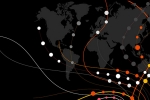
About us
PwC Luxembourg is the largest professional services firm in Luxembourg with over 3,600 people employed from 90 different countries. PwC Luxembourg provides audit, tax and advisory services including management consulting, transaction, financing and regulatory advice. The firm provides advice to a wide variety of clients from local and middle market entrepreneurs to large multinational companies operating from Luxembourg and the Greater Region. The firm supports its clients in creating the value they are looking for by contributing to the smooth operation of the capital markets and providing advice through an industry-focused approach.
At PwC, we help clients build trust and reinvent so they can turn complexity into competitive advantage. We’re a tech-forward, people-empowered network with more than 364,000 people in 136 countries. Across audit and assurance, tax and legal, deals and consulting we help build, accelerate and sustain momentum.
PwC Luxembourg is a member firm of PwC International Limited ("PwC IL"). All PwC member firms are separate legal entities which deliver their services locally and internationally without engaging in any way PwC IL' responsibility or liability.
Our company stands out due to the diversified knowledge of the industries we serve and the services we offer. Long-term expertise within the local market place, a strong commitment to helping our clients and the ability to transfer their experience to the challenges ahead distinguish our professionals.
The additional responsibilities our partners bear on a global level grant a continuous exchange between the Luxembourg firm and the global network of PwC. This concept of shared information between regions, competencies and industries to develop valuable solutions for our clients is an integral part of our company's culture.
Careers with PwC Luxembourg
Join our team of solvers and give your career a different meaning
What's The New Equation?
A community of solvers coming together in unexpected ways.

ISO Certification
PwC Société Coopérative has achieved its certification against the international business standard ISO 27001 for a third time, covering the storage and processing of customers' data. We thereby prove to maintain the highest standards on implementing the Information Security Management System (ISMS) by ensuring that every aspect of information security is properly addressed in the best interest of our clients and other stakeholders.
Europrivacy - Your trusted partner, for business and privacy
This certification not only shows our commitment to data protection but also sets us apart as a trusted partner capable of safeguarding sensitive information. It is testament to our rigorous standards. It encompasses the secure interaction and exchange of confidential documents and personal data between PwC Luxembourg and our clients through the electronic Collaborative Solution (eCS).
Contact us
Pauline André
Director, Head of Marketing & Communications, PwC Luxembourg
Tel: +352 49 48 48 3582








